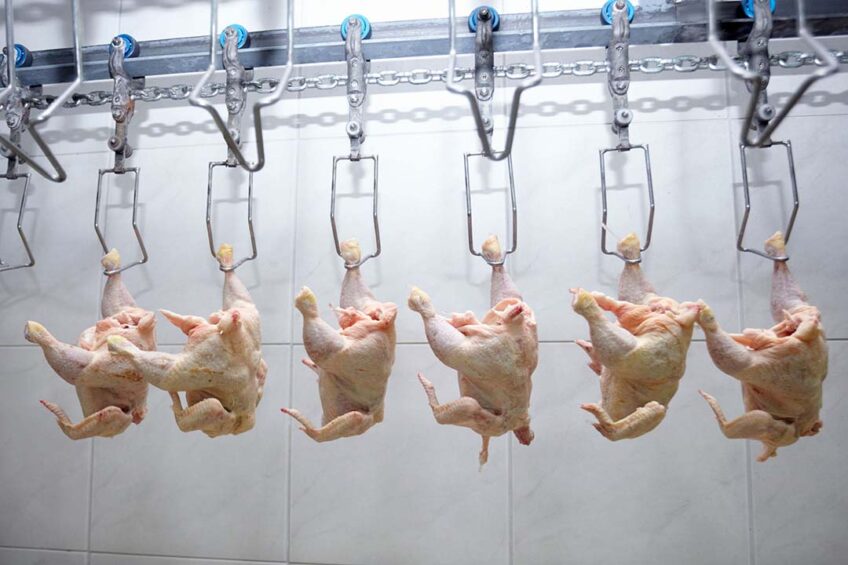US poultry processing line speeds – controversy over bird welfare continues

The speed at which poultry is processed in US slaughter plants has been legally contested for several years, and the battle is not yet over.
There are concerns that increasing the processing line speed negatively impacts birds at the point of slaughter and can also increase safety risks for plant workers.
In 2020, the US Department of Agriculture (USDA) had been challenged in court by The Humane Society of the US over providing line speed waivers to 47 poultry plants across various US states in 2018. These plants participate in what is called the New Poultry Inspection System (NPIS), and are allowed a line speed of 175 birds/minute, when all other US poultry plants have to stay at 140 birds/minute.
According to the National Chicken Council, increased line speeds of up to 175 birds/minute have been studied for 25 years: “A pilot programme using almost 2 dozen chicken processing plants was initiated under the Clinton administration[…] The modernised system has been studied, debated, and reviewed in depth.”
The waivers given out in 2018 were extended in a modified format until 2022. At that point, they had a new expiry date of 31 March 2024. However, their expiry has again been extended, this time to 15 November. The US Secretary of Agriculture, Tom Vilsack, made this decision on the grounds that he needs more time to study the issue.
Court case
Returning to the legal battle, in late February, the US District Court for the Northern District of California ruled that plaintiffs in the 2020 case against the USDA lacked standing.
The judge said the regulatory landscape had changed, and that the plaintiffs (The Humane Society of the United States, Mercy for Animals and several other animal rights groups) had failed to show alleged harms were traceable to the 2018 criteria for waivers. However, the plaintiffs received permission to amend their complaint within 21 days.
In terms of alleged harm to birds, the judgement noted that “the plaintiffs allege that each step [in the slaughtering process] entails a margin of error such that the intended result at that step is not achieved for a certain number of chickens, but those chickens still proceed to the next step.” These steps include “upside-down shackling on a conveyor line, passage through electrified water to render the chickens unconscious, carotid-artery severing by a blade, and submersion of the deceased chickens into a hot-water tank.”
The Humane Society of the United States and the other plaintiffs have already submitted an amended complaint and a case conference is scheduled for June.
Join 31,000+ subscribers
Subscribe to our newsletter to stay updated about all the need-to-know content in the poultry sector, three times a week. Beheer
Beheer











 WP Admin
WP Admin  Bewerk bericht
Bewerk bericht